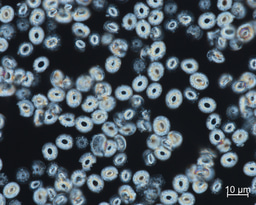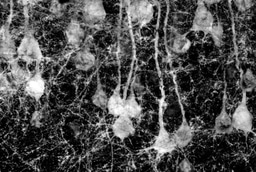Near-term pathways for decarbonizing global concrete production
Published in Sustainability

Over the next two decades, the global urban population is expected to grow by nearly 22%. To accommodate this growth, the development, maintenance, and extension of urban areas will accelerate. This acceleration will continue to drive the need for concrete, an essential structural material used in infrastructure and buildings. The already flourishing global consumption of concrete contributes to nearly 8% of anthropogenic greenhouse gas (GHG) emissions, and consequently, decarbonization of the concrete industry is crucial to meet reduction targets to limit global warming to 1.5°C by 2050.
The primary source of GHG emissions associated with concrete production is the manufacturing of cement (~90%), which, when mixed with water, acts as a glue that binds together sand and gravel to form concrete. We estimate that the global demand for cement will be almost 30% higher in 2050 than in 2015 as a result of urban growth. To reduce GHG emissions from cement manufacturing, emissions related to heat generation, as well as CO2 emissions from the chemical reaction in which cement is formed from limestone, need to be targeted. Furthermore, the efficient use of cement in concrete systems can drive significant reductions in demand for new cement.
Near-term mitigation strategies
In our paper, recently published in Nature Communications, we present mature and implementable solutions to decarbonize concrete production and quantify their potential effects at a global scale. We hope that this work will inform policy changes to reduce the environmental burdens of cement and concrete production. The strategies presented in this work aim to mitigate GHG emissions throughout the life cycle of concrete. These include switching to less GHG intense fuels, improving equipment efficiency, and shifting to a low carbon electricity grid. We also consider the effects of widely recognized partially substitution of cement with supplementary cementitious materials; substitutions using supplementary cementitious materials not only typically reduce GHG emissions per unit volume of concrete, but they can also improve structural properties of concrete, specifically making it more durable. Noting improvements to durability, our work also considers the potential effects of longer service lives of concrete structures, which could drive down the future material demand, and consequently, reduce GHG emissions from cement and concrete production. Concrete is typically utilized together with steel reinforcement, where the characteristic strengths of both materials are used to engineer desired performance. By optimizing the concrete-to-reinforcement ratio to the expected application and load, the material demand and, hence, environmental impact per structural member can be reduced. However, current design codes do not nurture this pathway to reducing environmental impacts. Rather, reinforced concrete members are generally over-designed for ease of construction and to reduce cost. In our work, we provide an initial estimate of the savings that could be achieved from this stage of structural design by comparing the GHG emissions intensity of two types of members that represent about 80% of the concrete market.
Key Findings
In our paper, we projected future GHG emissions associated with concrete production, as well as potential reductions of each mitigation strategy and cumulative reductions. The greatest potential is seen for using higher replacement levels of supplementary cementitious materials and by service life elongation. These strategies are especially crucial to consider in regions expecting large economic and population growth, such as in India and Africa (which models project as potentially needing sharp increases of concrete after ~2025). Generally, shorter service lifetimes are seen in developing countries and regions, and hence, there is a great opportunity to design concrete structures with lower embodied impacts that last longer in regions expecting to be the hot spots for future GHG emissions. However, while the use of supplementary cementitious materials has the potential to quadruple the service lives of concrete structures, the shorter economic lifetime often governs decision-making on when structures are replaced, especially in fast-growing urban areas. Factors related to a building’s economic service life include changes in use, standards and legislation, and achieving the same functionality at lower operating costs. Therefore, policy changes that incentivize structures to be in use longer, along with changes to standards to enable higher substitution ratios of supplementary cementitious materials in concrete mix design are necessary to mitigate GHG emissions.
These results emphasize the possibility to meaningfully reduce GHG emissions throughout the life cycle of concrete by readily implementable mitigation strategies, such as those from improved design and use of concrete. Yet, these results also highlight benefits that can be achieved through shifts in manufacturing. While these changes are modeled in our study as being adapted gradually, with the right policy reformations their implementation can be accelerated. This provides an opportunity to curve emissions from concrete production to avoid the peak in 2050.
Follow the Topic
-
Nature Communications

An open access, multidisciplinary journal dedicated to publishing high-quality research in all areas of the biological, health, physical, chemical and Earth sciences.
What are SDG Topics?
An introduction to Sustainable Development Goals (SDGs) Topics and their role in highlighting sustainable development research.
Continue reading announcementRelated Collections
With Collections, you can get published faster and increase your visibility.
Clinical trials 2025
Publishing Model: Open Access
Deadline: Dec 31, 2025
Women's Health
Publishing Model: Hybrid
Deadline: Ongoing






Please sign in or register for FREE
If you are a registered user on Research Communities by Springer Nature, please sign in